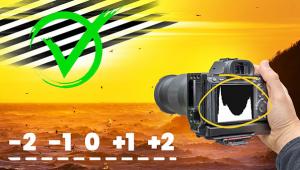Some are not even sure if teens, with their limited experience, are capable of making responsible choices. How to squirt by Real Sexy Talk
A Body Of Work; Do You Really Need One?
It’s an interesting phrase, “body of work,” most easily understood by looking at a photographer who has clearly created one. Henri Cartier-Bresson might be a good example, shooting mostly reportage. So might Sebastião Salgado, with the same sort of thing, or Ansel Adams and his landscapes. There’s a broad, underlying unity of both theme and vision in each case.
This underlying unity is what defines a body of work, and it is something to which many photographers aspire. For that matter, it is a job qualification if you are looking for steady employment as an in-house photographer or work for an agency, association, or NGO.
Empty Spaces |
|
 |
|
|
Even if you don’t view it as a job qualification, it still looks like a good thing to have. For exhibitions or publications (which feed upon one another), it is pretty much essential; and of course, all of us like to bask in the admiration of our peers and perhaps of a wider public. It may also help you to understand your own photography.
On the other hand, it’s perfectly possible to enjoy your photography, even to earn a living at it, without ever creating anything that might be formally recognizable as a body of work. At worst, a body of work can be a trap, forcing you to go on doing only the sort of work for which you are known, or a sham, in which you cynically take the sort of pictures you know will appeal to a certain kind of art critic, pictures made to shock or surprise the viewer but that are not honest to your vision.
Festivals are a great place to see various sorts of “bodies of work.” Every July, Frances and I go to the Rencontres in Arles in the South of France. This is the world’s largest gathering of fine art photographers, with scores of exhibitions: there are reports of Arles 2008 and 2009 on www.rogerandfrances.com. There are always at least as many bad exhibitions as good. The best are very good, but among the bad, the same predictably “shocking” themes (usually revolving around sex or drugs or both) appear with monotonous regularity.
A few years back, as a change from sex and drugs, one exhibition consisted solely of big, technically perfect prints of dog droppings in the photographer’s garden. Part of a “body of work”? Well, possibly. It’s easy to fall into technical gimmickry, too: obscure antique processes, or very large format cameras, or monster enlargements. Any or all of these can unify a body of work, but they can equally easily (or more easily) be pretentious wastes of time and effort.
Street Furniture |
|
 |
|
|
The good exhibitions can, however, help you get a real feeling for what constitutes a proper body of work. At Arles 2009, for example, there were two stunning retrospectives of Duane Michals and Willy Ronis. Both photographers were there, too, to talk about their work: Ronis was just shy of his 99th birthday, a few weeks before he died.
How, then, do you go about creating (or consolidating) your own body of work? Well, first of all, you need to accept that everyone’s path is different. It’s not a question of Ten Things You Can Do To Create A Body Of Work, though there are three things that are important, namely will, dedication, and opportunity.
Of course you need the talent, ambition, and vision to take good photographs, but this mostly comes down to faith in yourself: will. Unless you believe you’ve got what it takes, you can’t even try to create a body of work. The best way to bolster your faith in yourself, and to take better pictures as well, is to identify your strengths, by looking at your best pictures and asking yourself what you like and why it succeeds.
Ask others what underlying theme (if any) they see in your work. Then go back and look at your pictures and see if you think they’re right. If you don’t agree, set their views aside, and revisit them periodically to see if your own views have changed.
Whatever you do, don’t pay too much attention to others’ opinions of your work, or to your admiration of their work. I know one photographer whose will is boundless, but he is blown by the wind. One month he wants to be Martin Parr: color street photography. Another month, he wants to be Ansel Adams: large format black-and-white landscapes. Yet another, Ernst Haas: color semi-abstracts. He has no real strengths, because he has never allowed himself to be himself.
This is the key to the second thing you need: dedication. There is only one acceptable answer to the simple question, “Why am I doing this?” It is that there is nothing else you want to do more. Or possibly, nothing else you can imagine doing.
Go through your own pictures, and you may well see a series or many series starting to emerge. Give them names. Don’t worry if the names sound pretentious: it will help you remember them. My own series include the “Empty Spaces” series, the “Street Furniture” series, and the “1000 Motels” series (a gallery on www.rogerandfrances.com). Sometimes they overlap. A great advantage of playing “spot the series” with your own work is that it can help generate ideas for continuing the series, though there is always the danger that you will become more and more obsessed with less and less, and we’re back to the dog droppings again.
If you’re good enough, you can create a body of work in almost any area of photography, or in multiple areas. But, and this is the difficult part for most people, you have to have the freedom to take pictures, where and when you want: opportunity.
The easiest way to do this is to be born rich, so you never really have to worry too much about earning a living. Another is to burst like a bombshell on the photographic scene, and earn lots of money doing it. The rich and the fashionable flock to you, and within reason you can pick and choose what to do.
Few of us, though, are this rich or this good, so creating a major body of work is more difficult. Making a name for yourself will normally mean scrimping and saving on everything except photography, even working at temporary, menial jobs to fund your shooting: I know one excellent photographer who has exercised the dying trade of cinema usherette. Not all personal relationships are strong enough to withstand this sort of thing, and in any case, many prefer the new car, the fitted kitchen, the gewgaws of consumerism, to the manifold uncertainties inherent in building a name as a photographer.
A few photographers, it’s true, achieve fame almost willy-nilly in old age, having slowly built a body of work across their lifetimes, but no matter how you do it, rich or poor, fast or slow, you have to work at it, concentrating always on your strengths, trying to overcome or avoid your weaknesses, resisting at all times the temptation to go and do something else.
As the old proverb says, the journey of a thousand miles starts with a single step. You have already taken that step. Now, it’s just a question of putting one foot in front of the other, one picture after another, until you reach your goal. Oh: and deciding where you want the journey to take you.
For more imagery and bodies of work, visit the Galleries at: www.rogerandfrances.com.
- Log in or register to post comments


































